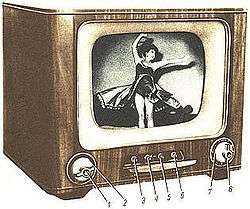
Girl$
Girl$ (Chinese: 囡囡) is a 2010 Hong Kong film directed by Kenneth Bi, it deals with teenagers and young women drawn into compensated dating in Hong Kong. The Chinese term 囡囡 (nānān) is a traditional affectionate term for daughter or young girl, but has also become used as euphemism for a prostitute in Hong Kong.
History
Girl$ premiered at the Hong Kong International Film Festival on 5 April 2010, before going on general release on 2 September 2010.
Plot
Gucci (Wong Si-Man) is a teenager who seeks to enhance her own self-image through the acquisition of luxury goods, bidding online for a designer handbag that she cannot afford. Looking for a way to make quick money she comes into contact with Icy (Michelle Wai). Just 19 herself, Icy acts as an online procuress, down to a single regular working girl, the hypersexual Lin (Una Lin), she offers to act as an agent for the underage Gucci's virginity, she also convinces Ronnie (Bonnie Xian) to go on compensated dates. Ronnie comes from a wealthy background however she finds herself alone and afraid of forming emotional attachments, wanting to avoid the stigma of being a prostitute, she instead pays the men she goes on dates with. Despite the differences in background the four become friends.

Girl +
Girl + is an EP by punk blues band Boss Hog.
Track listing
All songs written by Boss Hog and produced by Cristina Martinez. The Japan version includes the Action Box EP.
Band members
Additional musicians

Girl (Chinese constellation)
The Girl mansion (女宿, pinyin: Nǚ Xiù) is one of the Twenty-eight mansions of the Chinese constellations. It is one of the northern mansions of the Black Tortoise.
Asterisms
References

Structural analog
Structural analogs (structural analogue or simply analog) are models or representations that keep each other certain "structural similarity". It is used in engineering, chemistry, mathematics and other fields.
Despite the field diversity, all structural analog analysis use some level of abstraction to transform models in mathematical graphs, and detected structural analogies by algorithms. Example: for molecular structure comparison and classification operations, the compared compounds are modeled as a mathematical graph. Formally, when structures are represented by graphs, the concept of analog is related to a graph isomorphism.
Systems engineering
Analogical models are used in a method of representing a ‘target system’ by another, more understandable or analysable system.
Two systems have analog structures (see illustration) if they are isomorphic graphs and have equivalent (mapped) lumped elements. In Electronics, methods based on fault models of structural analogs gain some acceptance in industry.
Analog (TV series)
Analog was a Canadian business information television series which aired on CBC Television from 1971 to 1972.
Premise
This series concerned business and economic matters such as stock markets, presented for a general audience. Gordon Jones was its host.
Scheduling
The series aired on Sundays at 1:00 p.m. (Eastern) on a 15-minute time slot from its debut (11 October 1970) until 27 June 1971. From 26 September 1971, it aired as a half-hour series until the final programme aired 25 June 1972.
See also
External links

Analog television
Analog television or analogue television is the original television technology that uses analog signals to transmit video and audio. In an analog television broadcast, the brightness, colors and sound are represented by rapid variations of either the amplitude, frequency or phase of the signal.
Analog signals vary over a continuous range of possible values which means that electronic noise and interference becomes reproduced by the receiver. So with analog, a moderately weak signal becomes snowy and subject to interference. In contrast, a moderately weak digital signal and a very strong digital signal transmit equal picture quality. Analog television may be wireless or can be distributed over a cable network using cable converters.
All broadcast television systems preceding digital transmission of digital television (DTV) used analog signals.
Analog television around the world has been in the process of shutting down since the late 2000s.
Development
The earliest systems were mechanical television systems which used spinning disks with patterns of holes punched into the disc to scan an image. A similar disk reconstructed the image at the receiver. Synchronization of the receiver disc rotation was handled through sync pulses broadcast with the image information. However these mechanical systems were slow, the images were dim and flickered severely, and the image resolution very low. Camera systems used similar spinning discs and required intensely bright illumination of the subject for the light detector to work.
Podcasts:

